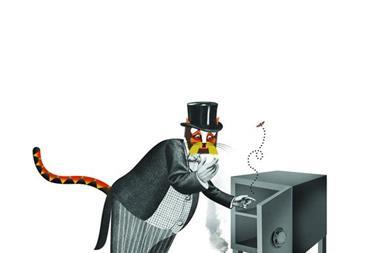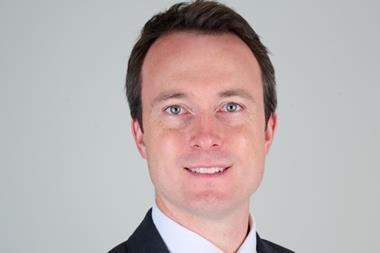We uncover the top 10 obstacles blocking a hard market
At the beginning of this year, many forecast that a hard market would finally emerge. But rates in many market segments have remained resolutely flat. Even Aviva, one of the most bullish proponents of a hard market, has been quietly dropping rates following half-year results that saw nearly £1bn wiped off its commercial premium.
Most agree the soft market will remain in commercial lines for the foreseeable future. “I see nothing happening … and that is very frustrating because the bottom line is going to be under serious pressure, this year and next,” says Groupama’s chief executive Francois-Xavier Boisseau.
Opinion is divided on personal lines, however, where rates, most noticeably in motor, have crept slowly upwards in the past two months. An optimistic Boisseau predicts that they will rise 10%-12% over the next year. But Fortis chief executive Barry Smith is less convinced, predicting an increase of just 3%-4%. He believes the current, and in some cases unprecedented, market conditions are defying the “logic” that governed in the past.
So, what factors are getting in the way of the rate increases that insurers so badly need?
1: The economy
As the recession lingers, clients have become increasingly price conscious and are less likely to accept rate increases
“We have seen evidence of our clients downsizing, so their overall premiums are decreasing,” says Towergate Risk Solutions’ chief operating officer Jonathan Walker.
“That has led to an increasing number who are very focused on their own cost base, of which their insurance requirement is one aspect. They are looking harder than they may have done previously at their insurance premium. Clients are also engaging with other brokers with a view to finding cheaper premiums.”
2: Competition
Increased capacity has intensified competition among insurers, reducing the scope for a collective drive towards a hard market
“There are far too many players chasing SME business,” Groupama’s Boisseau says. “Five years ago there were four or five companies in the arena. Now you have newcomers such as Brit, QBE and AIG playing in the field.
“Clearly because they had a strong growth ambition, they didn’t follow the rate increases pushed hard by Aviva, AXA and, to some extent, RSA. Because they have significant capacity the market is still in a very difficult place.
“Some of the chief executives were under pressure because they were losing top-line. Some who took a strong step forward seem to have taken a step back. It doesn’t help when after four or five months of hard work people undo everything. I think some players have given up too early.”
3: Dual pricing
Dual pricing – where insurers raise rates on renewals but suppress them on new business – has helped prevent a hard market
k“Some insurance companies want to see rates move forward on the renewals side but when a piece of new business is presented to them, they are still very aggressive in their appetite to pick it up,” says Lark Insurance Broking Group director Stephen Lark. “There is still a climate where an insurer will quote cheap deals to attract business in year one. That is indicative of the amount of competition in the marketplace.”
4: Lack of control
While insurers talk tough on rates, ground-level staff under pressure to retain business don’t always follow the official line
“There is an element of a lack of control,” says Broker Network’s divisional sales and marketing director Nick Houghton. “There may be a diktat from on high but that doesn’t actually filter through to the trading underwriter. Because of the economy, local insurers may be concerned about closures. Perhaps there is an element of self-preservation. They want to continue to write business locally to protect this position.”
5: Aggregators
Aggregators continue to lure consumers online, putting increasing pressure on brokers and insurers to match cut-throat pricing
“The impact of the aggregators and the internet is subduing the rates. To sell the volume needed by that particular model, you have got to make it cheap,” says Ashbourne Insurance managing director Peter Smits.
“More and more people who are selling their products on the aggregators are finding ways to strip out commission, reduce earnings to keep the rates low. The trouble from our perspective is that we are not on the internet.
“The client will go on the internet and get a price for £250 and that sets the bar. They come to us and they expect £250. So if the market rates are £400, all of a sudden you are forced into a situation where you have to look at the premium to give the client a deal he or she believes is competitive.”
6: Catastrophes
Major catastrophes used to affect all types of business, pushing up rates across the board. PricewaterhouseCoopers partner Paul Delbridge says the aftermath of Hurricanes Ike and Gustav in 2008 shows this is no longer the case
“After Hurricane Katrina in 2005, rates got a big push across all classes,” he says. “In fairness, they were already rising. Insurers had damaged balance sheets after 9/11. There was much more onus on everybody to raise rates.
“After 2005 most insurers repaired their balance sheets to a quite large extent so people are not in as desperate need to raise rates … This time around we haven’t seen as many people suffering because not as much catastrophe-exposed buinsess has been written and models have become more sophisticated.”
7: Captives
In a bid to save costs, multinationals are bypassing traditional commercial markets in favour of placing risks with captives in offshore locations
“FTSE 350 multinationals are putting more business through their captives rather than buying insurance in the conventional market. We are seeing more and more of that happening at the moment,” Delbridge says. “It is probably due in part to the downturn and people trying to save money. And so while they are paying premiums to captive insurers, it is staying within the group.”
8: Prudent back reserves
Insurers are using reserves to prop up balance sheets and this is relieving any pressure to raise rates
“Insurers have been able to release reserves to improve their underwriting results,” Deloitte partner Ian Clarke says. “The balance sheets for most insurers are pretty strong. They are not being influenced by losses. The drive is not there to move prices up significantly.”
9: Top players are still getting good returns
Despite the credit crunch, some insurers are reaping healthy profits from past investments. This is helping them to keep rates low and to retain a sizeable market share
“In commercial lines there is still quite a lot of profit that is coming through from some insurers, even if it is not the super profits from commercial property in the past,” Fortis’s chief executive Barry Smith says.
“But it is still profitable and you can see the desire of many companies to invest more capital within the UK. If the top quartile of players are getting good returns, why should they move their rates up?”
10: Claims are down
A steady decline in the overall rate of claims has removed a traditional pressure point for rate increases
“Claims frequency has been a long downward trend,” Clarke says. “You are getting fewer accidents on the road and fewer claims are being made. It is a pretty benign claims environment. This means there is no great incentive based on claims alone to put rates up.”
Hosted by comedian and actor Tom Allen, 34 Gold, 23 Silver and 22 Bronze awards were handed out across an amazing 34 categories recognising brilliance and innovation right across the breadth of UK general insurance.













































No comments yet